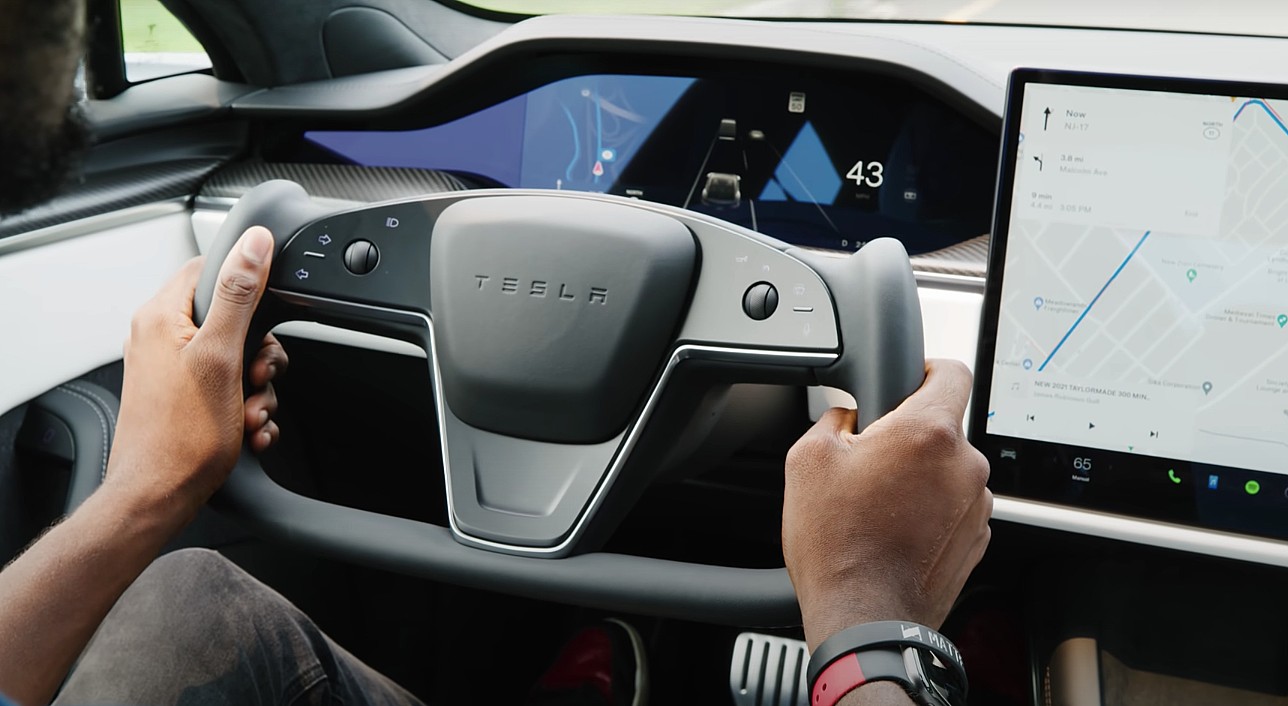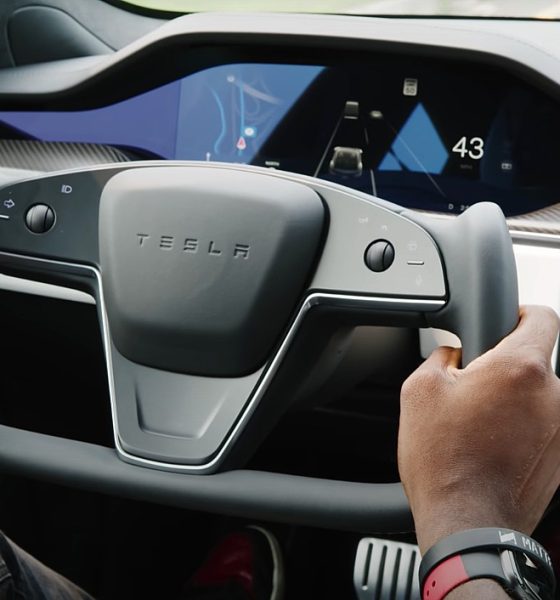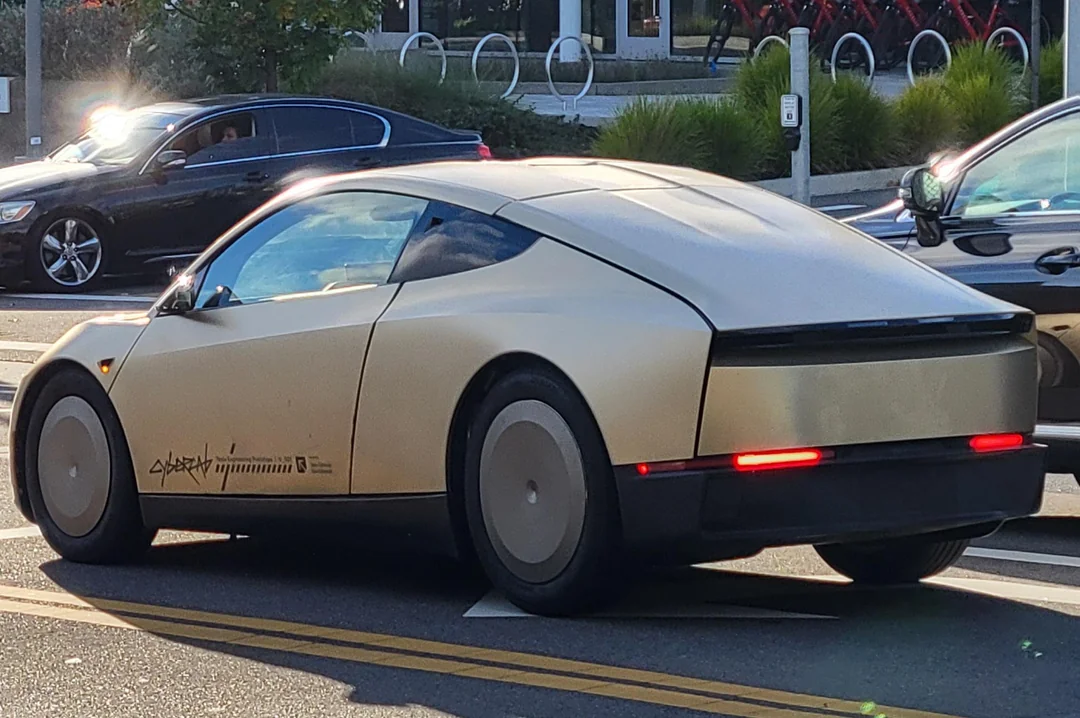

News
Tesla’s 20 million EV goal for 2030 can be equated to the Manhattan Project: expert
For the longest time, Tesla has played the role of a disruptor, a force in the auto industry that pushes other companies to change and acknowledge the legitimacy of battery electric vehicles. But with the company’s 20 million EV goal for 2030, Tesla is trying to go far beyond disruption — it’s trying to fundamentally remake the global auto industry and the battery sector at the same time.
If successful, Tesla could become the world’s largest company. Billionaire investor and longtime Tesla bull Ron Baron mentioned this recently when he noted that the only company that could probably follow the EV maker is Elon Musk’s private space firm, SpaceX. Selling 20 million vehicles in 2030 would also make Tesla an automaker that matches Toyota and Volkswagen’s sales today combined, holding about 20% of the global vehicle market.
Needless to say, Tesla’s goals are extremely ambitious. For the company to achieve this, Tesla should see a 14-fold increase over the estimated 1.4 million or so vehicles that it is hoping to sell this year. It will also cost hundreds of billions of dollars, as per a Reuters analysis of Tesla’s financial disclosures and forecasts on the electric vehicle sector as a whole.
Michael Tracy of The Agile Group, a manufacturing expert, noted that Tesla’s 20 million EV goal for 2030 is so ambitious, it could be equated to the Manhattan Project, the United States’ massive effort in the Second World War that paved the way to the creation of nuclear weapons. “I’d equate this with the Manhattan Project in World War Two,” Tracy said.
Tesla has been growing fast, but it will have to grow at an unprecedented rate in the coming years if it wishes to hit its 2030 target. Tesla would have to construct about seven or eight more Gigafactories every 12 months or so in the coming years. It would also need to secure about 30 times as much battery capacity to supply its operations. Reuters estimated that it would cost an estimated $400 billion over the next eight years to build Tesla’s manufacturing footprint across the globe and another $200 billion to build or purchase batteries.
Benchmark Mineral Intelligence, which tracks the worldwide EV battery segment, noted that Tesla would likely have to secure 2.0 million tons of lithium, 1.3 million tons of nickel, 0.2 million tons of cobalt, and 3.5 million tons of graphite to support its 20 million EV goal in 2030. This is about four times as much lithium and nickel, about twice as much cobalt, and seven times as much graphite as the entire electric vehicle segment is looking to consume this year.
Tesla has been busy pursuing its ambitious 2030 goal. Former Tesla executives interviewed by the publication noted that Tesla had started signing offtake agreements with miners and refiners over a decade ago. The former Tesla executives reportedly noted that the company currently has deals with over 20 materials suppliers across the globe.
While experts today have stated that the raw material capacity needed to support Tesla’s 20 million EV goal for 2030 does not exist for now, the electric vehicle maker has a reputation for having great foresight. It may seem inconceivable now, but Tesla was considered insane in the past when it decided to build Gigafactory Nevada to prepare for the Model 3’s ramp. Back then, experts also questioned whether such a massive investment was warranted because the demand for EVs was still uncertain. But as history would show, Tesla was eventually proven right.
Don’t hesitate to contact us with news tips. Just send a message to simon@teslarati.com to give us a heads up.

News
Tesla Model 3 named New Zealand’s best passenger car of 2025
Tesla flipped the switch on Full Self-Driving (Supervised) in September, turning every Model 3 and Model Y into New Zealand’s most advanced production car overnight.

The refreshed Tesla Model 3 has won the DRIVEN Car Guide AA Insurance NZ Car of the Year 2025 award in the Passenger Car category, beating all traditional and electric rivals.
Judges praised the all-electric sedan’s driving dynamics, value-packed EV tech, and the game-changing addition of Full Self-Driving (Supervised) that went live in New Zealand this September.
Why the Model 3 clinched the crown
DRIVEN admitted they were late to the “Highland” party because the updated sedan arrived in New Zealand as a 2024 model, just before the new Model Y stole the headlines. Yet two things forced a re-evaluation this year.
First, experiencing the new Model Y reminded testers how many big upgrades originated in the Model 3, such as the smoother ride, quieter cabin, ventilated seats, rear touchscreen, and stalk-less minimalist interior. Second, and far more importantly, Tesla flipped the switch on Full Self-Driving (Supervised) in September, turning every Model 3 and Model Y into New Zealand’s most advanced production car overnight.
FSD changes everything for Kiwi buyers
The publication called the entry-level rear-wheel-drive version “good to drive and represents a lot of EV technology for the money,” but highlighted that FSD elevates it into another league. “Make no mistake, despite the ‘Supervised’ bit in the name that requires you to remain ready to take control, it’s autonomous and very capable in some surprisingly tricky scenarios,” the review stated.
At NZ$11,400, FSD is far from cheap, but Tesla also offers FSD (Supervised) on a $159 monthly subscription, making the tech accessible without the full upfront investment. That’s a game-changer, as it allows users to access the company’s most advanced system without forking over a huge amount of money.
News
Tesla starts rolling out FSD V14.2.1 to AI4 vehicles including Cybertruck
FSD V14.2.1 was released just about a week after the initial FSD V14.2 update was rolled out.

It appears that the Tesla AI team burned the midnight oil, allowing them to release FSD V14.2.1 on Thanksgiving. The update has been reported by Tesla owners with AI4 vehicles, as well as Cybertruck owners.
For the Tesla AI team, at least, it appears that work really does not stop.
FSD V14.2.1
Initial posts about FSD V14.2.1 were shared by Tesla owners on social media platform X. As per the Tesla owners, V14.2.1 appears to be a point update that’s designed to polish the features and capacities that have been available in FSD V14. A look at the release notes for FSD V14.2.1, however, shows that an extra line has been added.
“Camera visibility can lead to increased attention monitoring sensitivity.”
Whether this could lead to more drivers being alerted to pay attention to the roads more remains to be seen. This would likely become evident as soon as the first batch of videos from Tesla owners who received V14.21 start sharing their first drive impressions of the update. Despite the update being released on Thanksgiving, it would not be surprising if first impressions videos of FSD V14.2.1 are shared today, just the same.
Rapid FSD releases
What is rather interesting and impressive is the fact that FSD V14.2.1 was released just about a week after the initial FSD V14.2 update was rolled out. This bodes well for Tesla’s FSD users, especially since CEO Elon Musk has stated in the past that the V14.2 series will be for “widespread use.”
FSD V14 has so far received numerous positive reviews from Tesla owners, with numerous drivers noting that the system now drives better than most human drivers because it is cautious, confident, and considerate at the same time. The only question now, really, is if the V14.2 series does make it to the company’s wide FSD fleet, which is still populated by numerous HW3 vehicles.
News
Waymo rider data hints that Tesla’s Cybercab strategy might be the smartest, after all
These observations all but validate Tesla’s controversial two-seat Cybercab strategy, which has caught a lot of criticism since it was unveiled last year.

Toyota Connected Europe designer Karim Dia Toubajie has highlighted a particular trend that became evident in Waymo’s Q3 2025 occupancy stats. As it turned out, 90% of the trips taken by the driverless taxis carried two or fewer passengers.
These observations all but validate Tesla’s controversial two-seat Cybercab strategy, which has caught a lot of criticism since it was unveiled last year.
Toyota designer observes a trend
Karim Dia Toubajie, Lead Product Designer (Sustainable Mobility) at Toyota Connected Europe, analyzed Waymo’s latest California Public Utilities Commission filings and posted the results on LinkedIn this week.
“90% of robotaxi trips have 2 or less passengers, so why are we using 5-seater vehicles?” Toubajie asked. He continued: “90% of trips have 2 or less people, 75% of trips have 1 or less people.” He accompanied his comments with a graphic showing Waymo’s occupancy rates, which showed 71% of trips having one passenger, 15% of trips having two passengers, 6% of trips having three passengers, 5% of trips having zero passengers, and only 3% of trips having four passengers.
The data excludes operational trips like depot runs or charging, though Toubajie pointed out that most of the time, Waymo’s massive self-driving taxis are really just transporting 1 or 2 people, at times even no passengers at all. “This means that most of the time, the vehicle being used significantly outweighs the needs of the trip,” the Toyota designer wrote in his post.
Cybercab suddenly looks perfectly sized
Toubajie gave a nod to Tesla’s approach. “The Tesla Cybercab announced in 2024, is a 2-seater robotaxi with a 50kWh battery but I still believe this is on the larger side of what’s required for most trips,” he wrote.
With Waymo’s own numbers now proving 90% of demand fits two seats or fewer, the wheel-less, lidar-free Cybercab now looks like the smartest play in the room. The Cybercab is designed to be easy to produce, with CEO Elon Musk commenting that its product line would resemble a consumer electronics factory more than an automotive plant. This means that the Cybercab could saturate the roads quickly once it is deployed.
While the Cybercab will likely take the lion’s share of Tesla’s ride-hailing passengers, the Model 3 sedan and Model Y crossover would be perfect for the remaining 9% of riders who require larger vehicles. This should be easy to implement for Tesla, as the Model Y and Model 3 are both mass-market vehicles.









